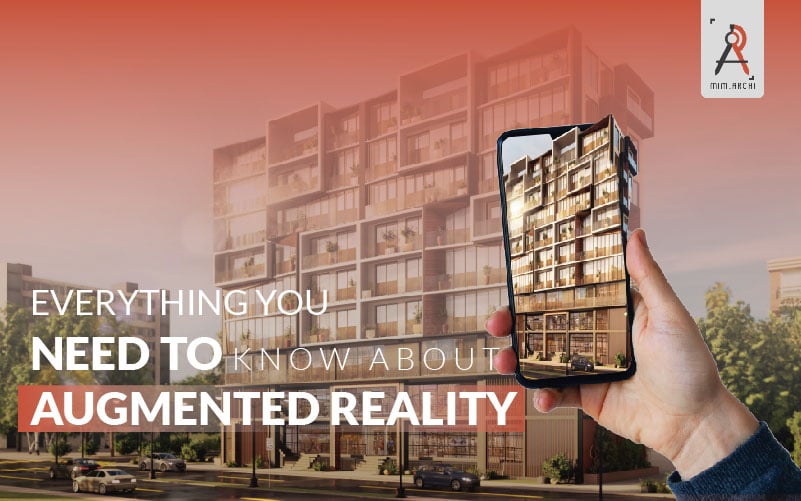Top 10 FAQs About the Augmented Reality

Home » VR Real Estate » Top 10 FAQs About the Augmented Reality
Discover the World of Augmented Reality
The use of augmented reality and virtual reality technologies is changing how we live, work, educate, and do everything else. Eventually, they will alter every aspect of our lives. Big companies like Google and Microsoft, and others are also coming up with innovative ideas to advance these technologies. Let’s take a look at some of the most commonly asked questions.
What is Augmented Reality?
Augmented reality uses an enhanced version of the physical world via digital visual elements, sound, and/or other aspects of the human senses. Today, mobile applications and digital business solutions heavily rely on this technology.
In addition to being heavily used by digital marketers, and technology firms, augmented reality is experiencing rapid growth. This means that the use of technology is not limited to marketing only.
Which Industries are Using the Augmented Reality?
AR Smart Glasses, headsets, and apps have added a significant amount of value to almost every industry, from retail to real estate. A variety of industries use Augmented Reality today, including education, military training, robotics, manufacturing, and others. It’s an unexpected change in the entertainment industry at the moment. From virtual offices to education and architecture, here are some industries using augmented reality.
1- Real Estate
2- Medical Training
3- Retail
4- Repair and Maintenance
5- Design and Modeling
6- Education
7- Robotics
8- Tourism
9- Entertainment
10- Public safety
11- Field Services
What are the benefits of Augmented Reality?
Augmented reality promises benefit for almost every industry, but at the moment few have adopted the technology. Retail and real estate stand to benefit the most from the technology. Here are some of the common uses of augmented reality in use today.
1- Customer experience is enhanced with augmented reality
2- With AR, workers can train without risk
3- Technology for automobile safety from AR
4- Children Can Experience Interactive Experiences Like Never Before with AR
5- Professionals in the real estate industry can benefit from building models
How Does Augmented Reality Glasses Work?
Let’s look at a few of the functionalities that are being created by different companies with Augmented Reality.
For voice searches, the AR Glasses will be able to communicate with Siri.
AR Glasses will be able to present images around you by using location and mapping algorithms; here, you can use your hands to see images.
With GPS technology in your glasses, you won’t need to worry about getting lost.
What is the relationship between Augmented Reality and Big Data?
Augmented reality promises benefit for almost every industry, but at the moment few have adopted the technology. Retail and real estate stand to benefit the most from the technology. Here are some of the common uses of augmented reality in use today.
1- Customer experience is enhanced with augmented reality
2- With AR, workers can train without risk
3- Technology for automobile safety from AR
4- Children Can Experience Interactive Experiences Like Never Before with AR
5- Professionals in the real estate industry can benefit from building models
What does augmented reality mean for the future of work?
The market for augmented reality technology is expected to be around 350 billion dollars by 2028. As the value of augmented reality increases at different workplaces every day so does its value. Here are some ways where augmented reality will certainly influence our lives.
1- Human-computer interaction
2- Enhanced training opportunities
3- Enhanced communications
4- Opportunities for better design
5- Visualizing property information
6- Improved customer service
How can Augmented Reality be used in the education sector?
A common application of augmented reality in the Education sector is to assist students in understanding complex problems. Students can manipulate shapes in 3D form while interacting with different shapes in real-time using augmented reality. Meanwhile, in education, virtual study trips allow students to take part in everything while sitting at home. Let’s have a look at some of the common benefits of AR to the education sector.
1- Increasing student engagement and interest
2- Creating a learning environment
3- Grasping the content
4- Working together
5- Memory
6- Development of sensory perception
7- Efficiency
How does augmented reality help businesses?
Enhancing customer experience and engagement with augmented reality has been proven to increase customer retention in industries like retail, e-commerce, education, healthcare, and real estate. Let’s have a look at some of the proven ways augmented reality is helping businesses.
1- Millions of people use augmented reality in gaming
2- AR is a great way to market your business
3- AR offers a three-dimensional perspective
4- AR can create repetition in engagement
5- AR solves modeling problems in real estate
What is the use of Augmented Reality in the Metaverse?
Modern technologies such as augmented reality and virtual reality seem so familiar to the idea of a Metaverse. You must wear a VR headset or augmented reality glasses to access the Metaverse. Virtual reality and augmented reality are often referred to as gateway technologies to the metaverse.
If we consider Facebook as Meta, it will only be accessible by using augmented and virtual reality. A project based on a VR; AR headset named “Cambria” is being developed by the company. Essentially, Facebook will offer a mixed reality experience to explore the new features it is offering through its Meta platform. Virtual avatars will serve as both a representation of humans in the online meta world and a communication tool in the real world.
